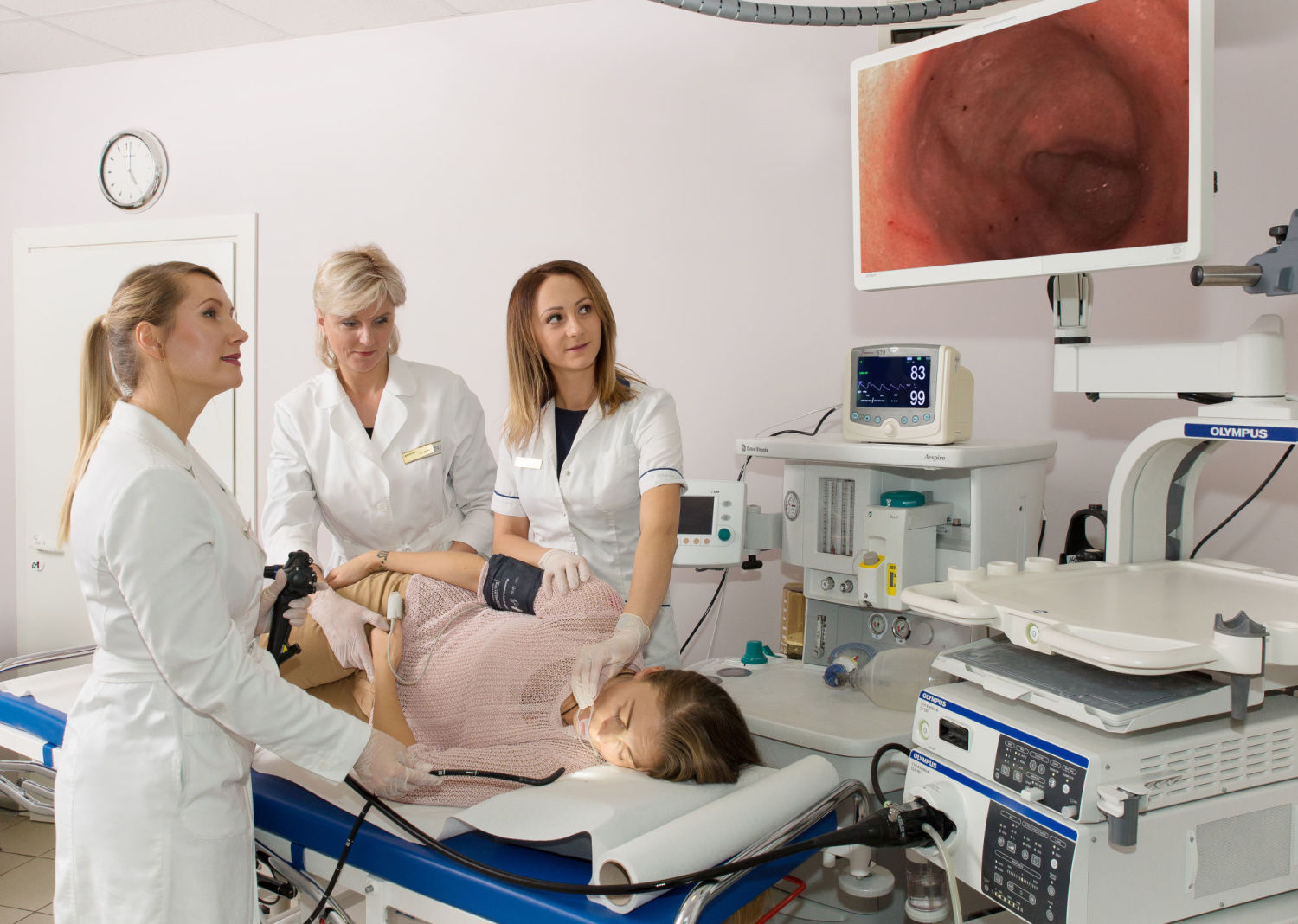An endoscopic examination in the event of gastrointestinal disorders (pain, heartburn in the stomach, etc.), anaemia and weight loss. The diagnostic technique enables detection of oesophagitis, gastritis, ulcers, benign and malignant lesions.
The examination is performed under local anaesthesia. If required, general anaesthesia can be used under the supervision of anaesthesiologist.
Receipt of the conclusion: immediately after the examination.
NBI with bright light improves the quality of the image
NBI (Narrow Band Imaging) subtype of digital chromendoscopy is used during upper, as well as lower endoscopies in addition to high definition endoscopes of the last generation. The mucous membrane of the gastrointestinal tract is reviewed under special mode of improved light filters, which, by providing brighter light, enhances the spectral image quality, surface and colour resolution. This enables detailed evaluation of capillary network and at the early stages of the disease distinguish pathological tissue from healthy tissue. By determining pre-cancerous state in the stomach by means of this method, specific biopsy samples can be collected. In the large intestine this type of light is used to detect flat polyps, as well as for the determining of the margins of large polyps.
Irrigation device for complete visualisation of the intestine
Irrigation or ware supply device serves as an auxiliary device during the conduct of upper, as well as lower endoscopies. It is an indispensable part of high quality colonoscopy examination and serves to rinse faecal residues from the mucous membrane and ensure complete visualisation of the intestine. This enables detection of polyps, especially flat and serrated polyps, which can be masked by parts of faecal coating in the event of incompletely cleared intestine. Irrigation device is used in the event, where the mucous membrane is coated with foam, mucus or residues of faeces to better visualise mucous membrane pathology in the stomach, as well as intestine, to more specifically determine the location of the lesion and ensure that collection of biopsy material is precisely and finely targeted. Intestinal bleeding serves as an important indication for the use of the water pump, since very high precision in determining the source of bleeding is required prior to the performance of targeted and effective haemostasis (bleeding arrest) measures. Considering the fact that the water is pre-heated to the temperature that is comfortable for the body prior to being supplied into the intestine, spasmodic constriction of the intestine that could encumber the procedure is completely excluded.


